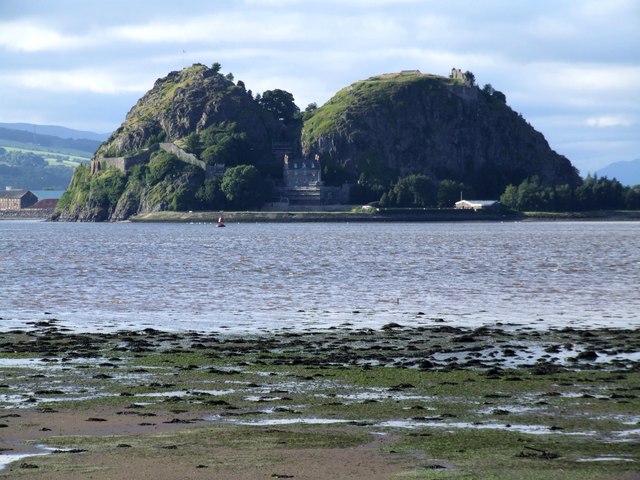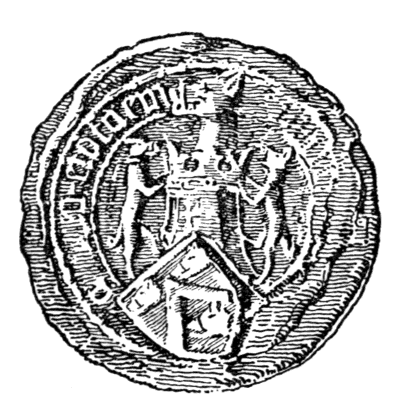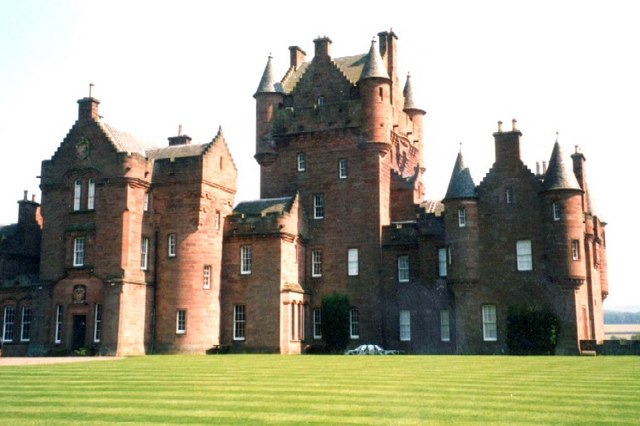|
Clan Swinton
Clan Swinton is a Scottish clan of the Scottish Lowlands.Way, George and Squire, Romily. (1994). ''Collins Scottish Clan & Family Encyclopedia''. (Foreword by The Rt Hon. The Earl of Elgin KT, Convenor, The Standing Council of Scottish Chiefs). pp. 334 - 335. History Origins of the clan The Swinton chiefs are likely to have been of Anglo-Saxon origin, possibly descended from the prominent nobles of the kingdom of Northumbria. The kingdom of Northumberland straddled the modern day border between Scotland and England. According to tradition the name was acquired for their bravery in clearing the country of wild boar, with the family arms alluding to this legend. However, the name is more likely to have been of territorial origin: the village of Swinewood in the county of Berwickshire was granted by Edgar, King of Scotland, son of Malcolm III of Scotland to Coldingham Priory in 1098 following the Norman Conquest of England to the south . In around 1136/7, Ernulf de Swinton ... [...More Info...] [...Related Items...] OR: [Wikipedia] [Google] [Baidu] |
Scottish Lowlands
The Lowlands ( sco, Lallans or ; gd, a' Ghalldachd, , place of the foreigners, ) is a cultural and historical region of Scotland. Culturally, the Lowlands and the Highlands diverged from the Late Middle Ages into the modern period, when Lowland Scots replaced Scottish Gaelic throughout most of the Lowlands. Geography The Lowlands is not an official geographical or administrative area of the country. There are two main topographic regions: the Lowlands and the Southern Uplands. The term "Lowlands" mainly refers to the Central Lowlands. However, in normal usage it refers to those parts of Scotland not in the Highlands (or Gàidhealtachd). The boundary is usually considered to be a line between Stonehaven and Helensburgh (on the Firth of Clyde). The Lowlands lie south and east of the line. Note that some parts of the Lowlands (such as the Southern Uplands) are not physically "low," Merrick for example reaching , while some areas indisputably in the Highlands (such a ... [...More Info...] [...Related Items...] OR: [Wikipedia] [Google] [Baidu] |
Macbeth, King Of Scotland
Macbeth ( – 15 August 1057) was King of Scots from 1040 until his death. He ruled over the Kingdom of Alba, which covered only a portion of present-day Scotland. Little is known about Macbeth's early life, although he was the son of Findláech of Moray and may have been a grandson of Malcolm II. He became Mormaer of Moray – a semi-autonomous province – in 1032, and was probably responsible for the death of the previous mormaer, Gille Coemgáin. He subsequently married Gille Coemgáin's widow, Gruoch, but they had no children together. In 1040, Duncan I launched an attack into Moray and was killed in action by Macbeth's troops. Macbeth succeeded him as King of Alba, apparently with little opposition. His 17-year reign was mostly peaceful, although in 1054 he was faced with an English invasion, led by Siward, Earl of Northumbria, on behalf of Edward the Confessor. Macbeth was killed at the Battle of Lumphanan in 1057 by forces loyal to the future Malcolm III. He was ... [...More Info...] [...Related Items...] OR: [Wikipedia] [Google] [Baidu] |
Robert III Of Scotland
Robert III (c. 13374 April 1406), born John Stewart, was King of Scots from 1390 to his death in 1406. He was also High Steward of Scotland from 1371 to 1390 and held the titles of Earl of Atholl (1367–1390) and Earl of Carrick (1368–1390) before ascending the throne at about the age of 53 years. He was the eldest son of King Robert II and Elizabeth Mure and was legitimized by the second marriage of his parents and by papal dispensation in 1349. John joined his father and other magnates in a rebellion against his great-uncle David II early in 1363 but submitted to him soon afterward. He was married to Anabella Drummond by 1367. In 1368 David created him Earl of Carrick. His father became king in 1371 after the unexpected death of the childless King David. In the succeeding years, Carrick was influential in the government of the kingdom but became progressively more impatient at his father's longevity. In 1384 Carrick was appointed the king's lieutenant after havi ... [...More Info...] [...Related Items...] OR: [Wikipedia] [Google] [Baidu] |
Robert II Of Scotland
Robert II (2 March 1316 – 19 April 1390) was King of Scots from 1371 to his death in 1390. The son of Walter Stewart, 6th High Steward of Scotland, and Marjorie, daughter of King Robert the Bruce, he was the first monarch of the House of Stewart. Upon the death of his uncle David II, Robert succeeded to the throne. Edward Bruce, younger brother of Robert the Bruce, was named heir presumptive but died childless on 3 December 1318. Marjorie Bruce had died probably in 1317 in a riding accident and Parliament decreed her infant son, Robert Stewart, as heir presumptive, but this lapsed on 5 March 1324 on the birth of a son, David, to King Robert and his second wife, Elizabeth de Burgh. Robert Stewart became High Steward of Scotland on his father's death on 9 April 1327, and in the same year Parliament confirmed the young Steward as heir should David die childless. In 1329 King Robert I died and his five-year-old son succeeded to the throne as David II under the guardianship of ... [...More Info...] [...Related Items...] OR: [Wikipedia] [Google] [Baidu] |
Sir John Swinton, 14th Of That Ilk
Sir John Swinton, 14th of that Ilk, great-grandson of Henry de Swinton who appears on the Ragman Roll, was a distinguished soldier and statesman in the reigns of Robert II of Scotland and Robert III of Scotland. (See Clan Swinton) France, Hundred Years War He was one of the greatest fighters of his time. In youth, the Borders being too quiet for him, he had signed on with John of Gaunt, 1st Duke of Lancaster. He made an interesting agreement with John of Gaunt which included the following among other terms: *a) Swinton was not to be required to fight against his own country. *b) He was to be given double pay, and free transport for himself, his horses and his men. *c) The Duke was to replace any of his horses that were lost or taken. In return, he was to have one-third share in the ransom of Swinton’s future prisoners and in his other "profits of war". This unusual "contract" shows that Sir John must already have acquired a solid reputation as a fighter, perhaps in Prussia ... [...More Info...] [...Related Items...] OR: [Wikipedia] [Google] [Baidu] |
Edward I Of England
Edward I (17/18 June 1239 – 7 July 1307), also known as Edward Longshanks and the Hammer of the Scots, was King of England and Lord of Ireland from 1272 to 1307. Concurrently, he ruled the duchies of Duchy of Aquitaine, Aquitaine and Duchy of Gascony, Gascony as a vassal of the French king. Before his accession to the throne, he was commonly referred to as the Lord Edward. The eldest son of Henry III of England, Henry III, Edward was involved from an early age in the political intrigues of his father's reign, which included a rebellion by the English barons. In 1259, he briefly sided with a baronial reform movement, supporting the Provisions of Oxford. After reconciliation with his father, however, he remained loyal throughout the subsequent armed conflict, known as the Second Barons' War. After the Battle of Lewes, Edward was held hostage by the rebellious barons, but escaped after a few months and defeated the baronial leader Simon de Montfort at the Battle of Eve ... [...More Info...] [...Related Items...] OR: [Wikipedia] [Google] [Baidu] |
Ragman Rolls
Ragman Rolls are the collection of instruments by which the nobility and gentry of Scotland subscribed allegiance to King Edward I of England, during the time between the Conference of Norham in May 1291 and the final award in favour of Balliol in November 1292; and again in 1296. Of the former of these records two copies were preserved in the Chapter House at Westminster Abbey (now in the National Archives (United Kingdom) at Kew), and it has been printed by Thomas Rymer. Another copy, preserved originally in the Tower of London, is now also in the National Archives. The latter record, containing the various acts of homage and fealty extorted by Edward from John Balliol and others in the course of his progress through Scotland in the summer of 1296 and in August at the parliament of Berwick, was published by Prynne from the copy in the Tower and now in the National Archives. Both records were printed by the Bannatyne Club in 1834. The derivation of the word ''ragman'' is ... [...More Info...] [...Related Items...] OR: [Wikipedia] [Google] [Baidu] |
Scottish Feudal Barony
In Scotland, a baron or baroness is the head of a feudal barony, also known as a prescriptive barony. This used to be attached to a particular piece of land on which was situated the ''caput'' (Latin for "head") or essence of the barony, normally a building, such as a castle or manor house. Accordingly, the owner of the piece of land containing the ''caput'' was called a baron or baroness. According to Grant, there were around 350 identifiable local baronies in Scotland by the early fifteenth century and these could mostly be mapped against local parish boundaries. The term baron was in general use from the thirteenth century to describe what would have been known in England as a knight of the shire.Alexander Grant, "Franchises North of the Border: Baronies and Regalities in Medieval Scotland", Chapter 9, Michael Prestwich. ed., ''Liberties and Identities in Medieval Britain and Ireland'' (Boydell Press: Woodbridge, 2008) The 1896 edition of ''Green's Encyclopaedia of the Law of ... [...More Info...] [...Related Items...] OR: [Wikipedia] [Google] [Baidu] |
Cranshaws
Cranshaws is a village on the B6355 road, near Duns, in the Scottish Borders area of Scotland, in the former Berwickshire. Of Cranshaws Castle only the tower remains, at Cranshaws Farm on Cranshaws Hill. Places nearby include Abbey St Bathans, Innerwick, Longformacus, Spott, East Lothian, Stenton, the Whiteadder Water, and Whittingehame. See also *List of places in the Scottish Borders *List of places in Scotland *Patrick Hepburn of Waughton Sir Patrick Hepburn of Waughton and Luffness (d. Bef. November 1649) was a Scottish laird and notable Covenanter from East Lothian. In 1639-1641 Sir Patrick was a member for Haddingtonshire in the Scottish Parliament. Landed proprietor His father ... References * Brooke, C J (2000) ''Safe sanctuaries: security and defence in Anglo-Scottish border churches 1290-1690'', Edinburgh, pages 50–1 * Fleming, Elma ''Berwickshire Monumental Inscriptions XIII Cranshaws'', publ. Borders Family History Society * External links *RCAHMS record of Cra ... [...More Info...] [...Related Items...] OR: [Wikipedia] [Google] [Baidu] |
Norman Conquest Of England
The Norman Conquest (or the Conquest) was the 11th-century invasion and occupation of England by an army made up of thousands of Norman, Breton, Flemish, and French troops, all led by the Duke of Normandy, later styled William the Conqueror. William's claim to the English throne derived from his familial relationship with the childless Anglo-Saxon king Edward the Confessor, who may have encouraged William's hopes for the throne. Edward died in January 1066 and was succeeded by his brother-in-law Harold Godwinson. The Norwegian king Harald Hardrada invaded northern England in September 1066 and was victorious at the Battle of Fulford on 20 September, but Godwinson's army defeated and killed Hardrada at the Battle of Stamford Bridge on 25 September. Three days later on 28 September, William's invasion force of thousands of men and hundreds of ships landed at Pevensey in Sussex in southern England. Harold marched south to oppose him, leaving a significant portion of h ... [...More Info...] [...Related Items...] OR: [Wikipedia] [Google] [Baidu] |
Berkeley Family
The Berkeley family is an ancient English noble family. It is one of only four families in England that can trace its patrilineal descent back to Anglo-Saxon times (the other three being the Arden family, the Swinton family and the Wentworth family). The Berkeley family retains possession of much of the lands it held from the 11th and 12th centuries, centred on Berkeley Castle in Gloucestershire, which still belongs to the family. History The Berkeley family descends in the male line from Robert Fitzharding (d. 1170), 1st feudal baron of Berkeley, Gloucestershire, reputedly the son of Harding of Bristol, the son of Eadnoth the Constable (Alnod), a high official under King Edward the Confessor. Berkeley Castle, the '' caput'' of the barony, and the adjoining town of Berkeley are located in the county of Gloucestershire and are situated about five miles west of Dursley and eighteen miles southwest of Gloucester, and northeast of Bristol. The location has conferred vari ... [...More Info...] [...Related Items...] OR: [Wikipedia] [Google] [Baidu] |







